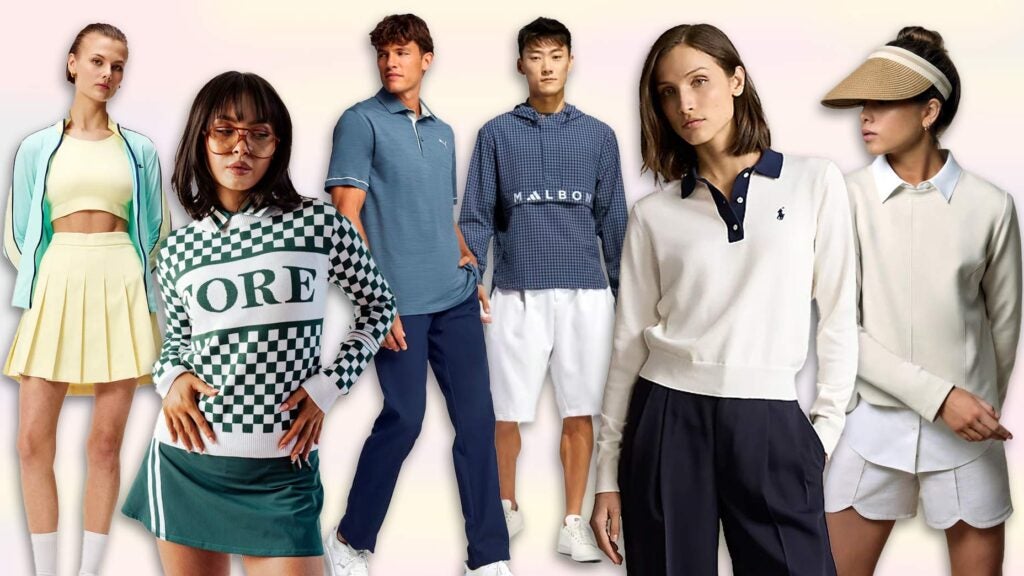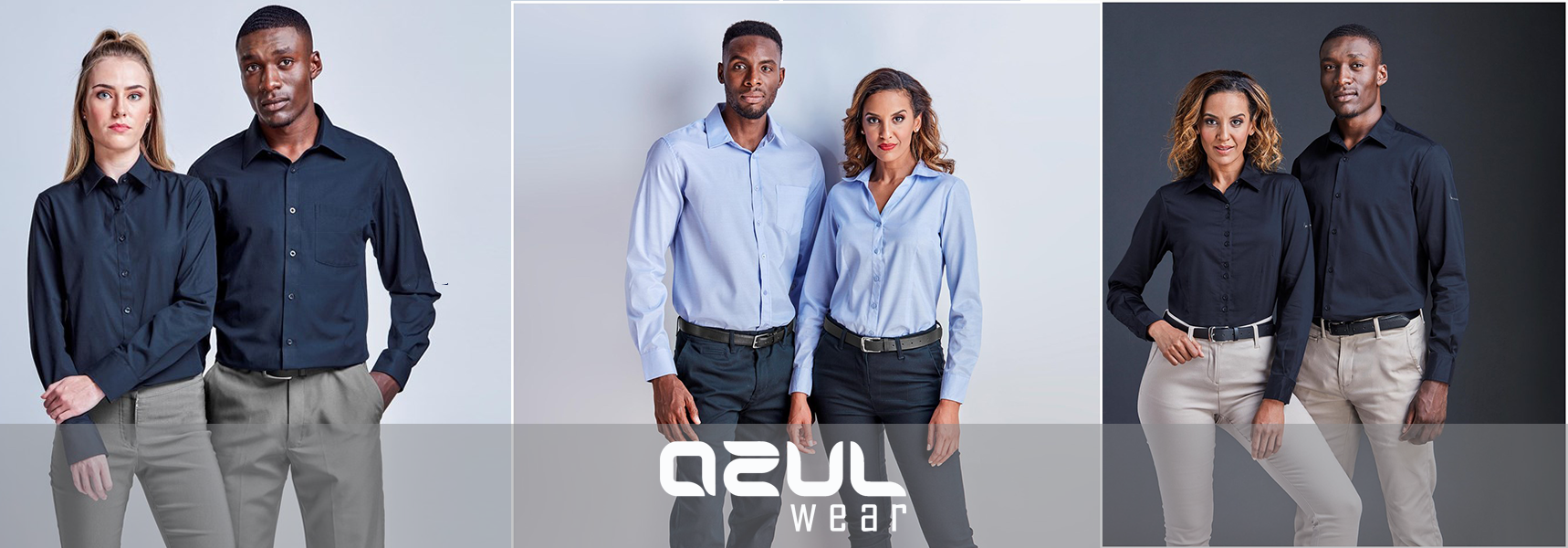How Branded Clothing Can Boost Confidence Through Fabric and Feel
How Branded Clothing Can Boost Confidence Through Fabric and Feel
Blog Article
Recognizing Garments: The Relevance of Fabric Options in Your Closet
The choice of textile in garments plays a crucial role in both appearances and performance. Different materials provide differing degrees of convenience, breathability, and sturdiness, straight affecting the user's experience. Understanding these subtleties can boost one's closet considerably. Lots of forget how these options can affect not simply individual style, however likewise sustainability. What material decisions could redefine your wardrobe and align it with both design and obligation?
The Duty of Fabric in vogue and Performance

Usual Material Types and Their Qualities
When selecting clothing, comprehending the characteristics of usual fabric kinds is important for making educated choices. Cotton, a widely-used natural fiber, is known for its convenience, soft qualities, and breathability, making it ideal for laid-back wear and daily garments. Linen, one more all-natural option, boasts excellent moisture-wicking properties and a distinct structure, ideal for cozy climates.Wool, frequently favored for its warmth and resilience, differs in fineness; merino woollen is soft versus the skin, while coarser kinds are used for outerwear. Artificial materials like polyester and nylon use longevity and resistance to creases, making them popular for activewear and traveling garments. Blends, which incorporate natural and artificial fibers, can improve capability while preserving convenience. By identifying these textile attributes, people can pick apparel that straightens with their lifestyle and visual choices.
Breathability and Comfort: Picking the Right Fabrics for Different Climates
Picking the ideal textiles for numerous climates can substantially boost comfort and total wearability. Breathable products are necessary in hot climates, as they allow air blood circulation and moisture dissipation. Fabrics such as cotton, bed linen, and moisture-wicking synthetics effectively attract sweat far from the body, maintaining the wearer cool and completely dry. On the other hand, in chillier environments, thicker textiles like woollen or fleece give insulation while retaining breathability, guaranteeing heat without overheating.Additionally, the selection of textile weight plays an important duty; lightweight textiles are preferable for summertime, whereas heavier choices are fit for winter months wear. Recognizing the unique residential properties of each fabric allows individuals to clothe suitably for varying weather conditions. Eventually, choosing comfy and breathable materials tailored to specific environments can greatly improve daily comfort and boost the total experience of wearing clothes.
Durability and Treatment: How Material Influences Long Life of Your Wardrobe
Selecting the right products can significantly affect the durability and care demands of a closet. Fabrics such as cotton and polyester are recognized for their strength and ease of maintenance, making them suitable for everyday wear. In contrast, delicate materials like silk and lace require even more cautious handling and specialized cleaning techniques, which can increase the time and effort needed for care. Branded Clothing.Durability is additionally affected by the fabric's weave and finish; firmly woven textiles often tend to withstand damage better than loosely woven choices. Furthermore, artificial blends usually supply improved sturdiness, combining the very best top qualities of numerous fibers.Understanding the care instructions for each and every fabric is necessary, as improper drying out or washing can lead to early wear. Inevitably, picking resilient materials can cause a longer-lasting closet, decreasing the regularity of replacements and adding to a more lasting fashion selection
The Impact of Textile on Fit and Shape

Lasting Material Choices: Making Eco-Friendly Choices
The influence of fabric extends beyond fit and silhouette to encompass ecological elements, motivating an expanding passion in sustainable fabric selections. Green textiles, such as natural cotton, hemp, and Tencel, are acquiring traction amongst consumers that prioritize sustainability in their closets. These materials are typically created with less chemicals and water, decreasing their ecological footprint.Additionally, recycled textiles, made from post-consumer waste, supply a cutting-edge solution to the textile sector's pollution trouble. Brands significantly accept openness in their sourcing techniques, allowing consumers to make enlightened decisions regarding their purchases.Choosing lasting materials not only sustains ethical techniques but also encourages the fashion industry to take on more responsible manufacturing approaches. As awareness of environmental problems climbs, individuals are prompted to assess the long-term influence of their fabric options, cultivating a motion in the direction of a much more ecologically aware and sustainable strategy to fashion.
Elevating Style: How Material Can Change an Outfit
While numerous might concentrate on color and cut when selecting an outfit, the option of textile plays a necessary role in raising style and enhancing total appearance. Different products convey distinctive state of minds and messages; for instance, silk exudes deluxe and elegance, while jeans supplies a laid-back, kicked back vibe. The structure and drape of a textile can drastically modify the shape, with structured textiles providing a refined appearance and softer ones developing a more fluid, relaxed aesthetic.Moreover, the weight of the textile affects wearability throughout seasons. Lightweight textiles like linen and cotton are suitable see post for summer season, while larger materials such as wool and velour give heat and beauty in chillier months. Recognizing textile properties, such as breathability and stretch, additionally equips individuals to make educated selections that improve comfort without jeopardizing style. Inevitably, the best textile can change an attire from average to amazing, making it an essential consideration in any closet.
Often Asked Inquiries
Exactly how Do I Recognize the Fabric Material of My Clothes?
To recognize textile content, one can check out treatment labels, conduct shed examinations for fiber recognition, or visit speak with textile swatches. These approaches assist set apart products, ensuring educated selections for clothing care and maintenance in day-to-day wear.
Can Textile Choice Affect My State Of Mind or Self-confidence?
Material choice can significantly affect an individual's state of mind and confidence. Branded Clothing. Specific products might evoke feelings of comfort or style, while others can really feel uncomplimentary or limiting, eventually affecting self-perception and psychological wellness throughout the day
What Fabrics Are Best for Sensitive Skin?
For individuals with delicate skin, natural materials like bamboo, cotton, and bed linen are usually recommended. These products are breathable, hypoallergenic, and much less most likely to cause irritation, making them suitable choices for convenience and skin health and wellness.
Just how Do I Properly Clean and Look After Various Fabrics?
To properly wash and care for different fabrics, one must think about each product's certain requirements, including temperature setups, detergents, and drying out approaches, guaranteeing long life and keeping the textile's original high qualities for perfect use.
Exist Details Fabrics for Athletic or Efficiency Wear?
Sports or efficiency wear frequently utilizes textiles such as nylon, polyester, and spandex. These products are made for moisture-wicking, breathability, and flexibility, boosting motion and convenience throughout physical activities while offering longevity and assistance. On the other hand, in cooler environments, thicker fabrics like wool or fleece give insulation while retaining breathability, ensuring heat without overheating.Additionally, the choice of fabric weight plays a vital duty; light-weight materials are better for summer season, whereas heavier alternatives are suited for winter season wear. In contrast, delicate materials like silk and lace require even more careful handling and specialized cleaning techniques, which can raise the time and effort required for care.Durability is likewise influenced by the fabric's weave and surface; securely woven fabrics often tend to resist wear and tear far better than freely woven alternatives. In comparison, inflexible textiles can limit movement however offer a traditional, click to investigate polished look.Moreover, the thickness and texture of the material can influence the aesthetic assumption of body form. The effect of fabric extends past fit and silhouette to include environmental aspects, triggering a growing passion in lasting material selections. The texture and drape of a fabric can dramatically modify the shape, with structured textiles supplying a polished appearance and softer ones producing a much more fluid, unwinded aesthetic.Moreover, the weight of the textile influences wearability across seasons.
Report this page